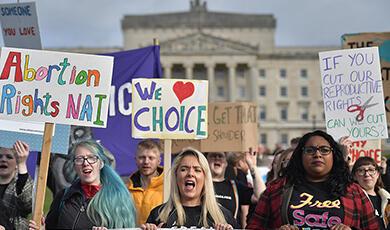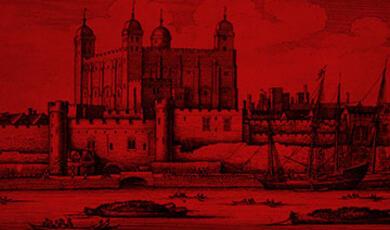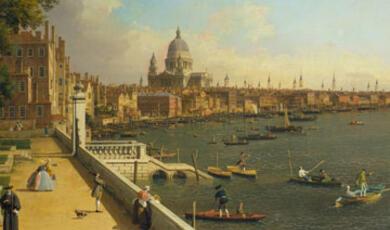The City of London and the Magna Carta
Share
- Details
- Text
- Audio
- Downloads
- Extra Reading
Anthony Alridge QC once famously argued a case using the Magna Carta as precedent, so who better to discuss who the great charter has shaped and been adopted by the City of London. In this lecture he examines the history of the city and the Charter and how the two have become inextricably linked.
Download Text
14 January 2015
The City of London and the Magna Carta
Anthony Arlidge QC
Twenty years after he conquered England, William the Conqueror ordered a survey of the wealth of the nation. The Domesday Book does not mention London. The Normans had introduced a strict feudal hierarchy whose wealth was measured in land. The measure used in the Book was the hide – the amount of land sufficient to support one household. The cities of England did not fit easily into this pattern. London was not included in the survey, because the Normans did not rely on the wealth from trade.
London, however, was to play crucial role in the events leading up to the granting of the Charter in 1215. The rebel barons are not named in the Charter, but we have their identity from the Chronicle of Matthew Paris. They were of Norman descent. The Charter records that the King made the grant on the advice of certain barons and senior clergy. These are the supporters of the King and their names were Norman. There was one exception – the list included the Mayor of London who had sided with the rebels. He was probably Serlo the mercer. He was succeeded in the course of 1215 by Thomas Hardel – both Anglo Saxon names. The first extant list of the aldermen of London was published in 1127. Their names too were Anglo Saxon. Trade was a means for the Anglo Saxons to reassert a role in the life of the nation.
London’s development had lagged behind that of cities on the continent of Europe. John’s father, Henry II, who ruled from 1154 to 1189, discouraged the growth of power in the cities for fear they would resist his government. By contrast the cities of Lombardy in northern Italy had grown increasingly prosperous and powerful, being at the cross roads of trade routes from the Mediterranean to northern Europe. They were vassals of the Emperor of Germany, but tried to claim the right to govern themselves. Frederick Barbarossa, who became emperor in the same year as Henry II became king, tried to reassert his power over the cities and in turn this led sixteen of them to form the Lombard League. They swore an oath of association called a sacramentum to preserve the privileges of the cities against Frederick. In 1176 the League decisively defeated him at the battle of Legnano and he in 1183 he granted them the right to levy their own taxes, to administer their own civil and criminal courts and to oversee the welfare of their cities. They came to appoint consuls and a podesta to administer the individual cities. You have probably seen the podesta’s house in the main square of Florence. Over the same period the larger cities in France established a degree of autonomy, governing themselves by consuls and a leader they called by the Latin Maior.
In England sheriffs were royal officials, presiding in the county courts and collecting taxes. Their conduct was frequently seen as oppressive and even corrupt. Royal records for 1129 describe the citizens of London offering king Henry I 100 marks for the right to appoint their own sheriff. In 1130 the records show that they were granted this right. The following year the King granted the City its first charter. We only have its wording from later documents which purport to rehearse its terms, but it appears to have given the citizens of London the right to chose whomsoever they will from among themselves to be sheriff, in return for promising the Crown 300 pounds a year in taxes. He was to conduct proceedings both in the local court or husting, but also trials in serious matters elsewhere conducted by royal judges. They were granted various other privileges including hunting rights in the Chilterns.
Richard I became king in 1189 and not long after departed on his crusade to the Holy Land. He left his Chancellor, William Longchamps, in charge of the kingdom. He soon became unpopular and London seems to have grabbed the chance to assert its independent position. From 1191 the leaders of the City are recorded, starting with Henry Fitzailwin. In the autumn of that year Longchamps fled the kingdom and King Richard replaced him with Walter of Coutances, bishop of Rouen. The citizens of Rouen already had a council of officials called consuls or echevins. By 1193 Richard had been taken prisoner in Austria and the principal citizens of London swore a communal oath they called a sacramentum closely resembling that used in Rouen and specifically referring to echevins. They swore loyalty to King Richard and obedience to their Maior.
When King John came to the throne the citizens of London paid 3000 marks for the right to appoint their own sheriff. John granted them a Charter preserving their ancient liberties. In 1206 the City and the King came into conflict about the level of taxation. The City demanded that taxes should not be levied on them without the agreement of the King’s Council and the City. This appears to be the first medieval reference to no taxation without representation.
Once rebellion had started in May 1215, London was of crucial strategic importance, because it controlled the route from Dover – the first stone bridge across the Thames at London had been completed in 1209. Whoever controlled London could prevent the importation of mercenary soldiers from Europe. Aware of this John granted a Charter early in May specifically giving the City the right to chose a mayor. He received no payment for this. The person appointed had to be faithful to the king and discrete.
The Saxon office of ealdorman became alderman. Those who governed the City became drawn from a narrow oligarchy drawn mainly from the drapers, pepperers, goldsmiths, mercers and vintners. The more self important among them began to call themselves barons.
The leader of the rebels, Robert Fitzwalter, had contacts in the City. He was lord of Dunmow in Essex, but also of Baynard’s castle in the City. Although John had razed this to the ground, Robert was also entitled to carry the banner of the City and to command the militia. This will explain why, when the rebels arrived outside the City walls on 17th May, the gates were opened to them. Roger of Wendover, a monk at St Albans, chronicled these events. The rebels ‘entered the City without any tumult while the inhabitants were performing divine service...the rich citizens were favourable to the rebels and the poor ones were afraid to murmur against them.’ When John met the rebels at Runnymede he was at such a disadvantage militarily that he had no alternative but to make the grant. Clause 13 guaranteed London its ancient liberties and free customs. Shortly after the grant a separate treaty was entered into whereby London was to remain in the custody of the rebels as security for the King complying with his grant. When he failed to do so, civil war broke out.
On display today is the City’s copy of Magna Carta 1297. This version is as important as the 1215 Charter. The 1297 Charter rehearses that granted by in 1225. England was still under the Regency government and they requested the grant of taxation by the full Council of the realm to defend Gascony against the French. The Council deliberated for some time and then offered to grant the taxation if the King would confirm Magna Carta. This he did. Thereafter similar bargains were struck up to the 15th century of tax for confirmation of the Charter. The medieval world attached great importance to the Charter. Henry II had established an empire that stretched from Normandy to the Spanish border. John had lost all this territory, but he and his successors constantly mounted expensive campaigns to regain it. These required taxes to support them. In the 1290s Edward I sought such taxes on an annual basis. In 1297 he summoned a parliament which, in addition to the barons of the realm, contained knights as representatives of the shires and burgesses as representatives of the cities. It had adopted a form recognisable as a modern parliament. When asked for further taxes parliament requested confirmation of the Charter. This Edward did, recording his confirmation in his statuta book. Magna Carta was now a statute. Thus was preserved in perpetuity the most famous of the clauses of the 1215 Charter no 39.
‘No free man shall be taken or imprisoned or disseised or outlawed or exiled or in any way ruined, nor will we go or send against him, except by the lawful judgment of his peers or by the law of the land.’
In the 1330s Edward’s grandson, Edward III, started a war that was to last a hundred years. Anxious to get on with it, he departed for the continent leaving the Archbishop of Canterbury in charge of the realm with strict instructions to levy taxes to support the war. He failed in his task and Edward, returning in a fury, charged the archbishop with treason. The Archbishop wrote complaining that this was an unseemly process – will you condemn me without hearing me? Shortly after parliament passed a statute requiring that no man should be condemned without due process. Now all men, not merely freemen are protected and all proper legal procedure is protected.
King John was right when he claimed that the Charter of 1215 had been extorted from him by duress. Sadly later constitutional development also depended on force of arms. In the first half of the 17th century lawyers, led by Lord Chief Justice Coke, prayed the Charter in aid to claim that the King was subject to the law. Their argument derived in large part from the Charter, Coke asserting at ‘Magna Carta has no sovereign’. The Stuarts claimed they were subject only to God. This conflict was only settled by the English civil war, which ended with a triumphant Parliament. When William and Mary came to the throne it was on a compact that they would abide by the English Bill of Rights. This was only finally achieved, however, after William had invaded England.
When the English colonies were established in America they adopted constitutions embracing parts of the Charter and the English Bill of Rights. The Virginia Constitution of 1618 claimed for settlers in that State the same rights as those living in England. In Maryland in 1638 Magna Carta was specifically incorporated into state law. When other states drew up their constitutions they reflected the Charter. This was hardly surprising as many of those concerned in government in the new world had trained in the English Inns of Court. Blackstone’s Commentaries on the Laws of England, which laudedMagna Carta,was a best seller in America. Americans argued that Magna Carta could defeat an Act of Parliament. The Supreme Court still has power to declare Acts of Congress unconstitutional. It was, however, only by force of arms that America seceded from England and the United States was established. The American Constitution contains a clause which clearly derives from clause 39 of the 1214 Charter. The Americans sent Jefferson to Paris as ambassador to the newly created French Republic. He advised Lafayette on the constitution for the new republic, as a result of which it contained and still contains a clause similar to cl 39.
It is possible to trace back many of what we now call human rights to a seed in Magna Carta. So far as the City of London is concerned it still appoints it own sheriffs. It chooses its own Lord Mayor. The Central Criminal Court is still the City’s Court presided over by the Recorder of London, though the Ministry of Justice sometimes interferes. In populate imagination Magna Carta still stands as a bulwark against unnwarranted exercise of power by government.
© Anthony Arlidge QC, 2015
This event was on Wed, 14 Jan 2015
Support Gresham
Gresham College has offered an outstanding education to the public free of charge for over 400 years. Today, Gresham College plays an important role in fostering a love of learning and a greater understanding of ourselves and the world around us. Your donation will help to widen our reach and to broaden our audience, allowing more people to benefit from a high-quality education from some of the brightest minds.


 Login
Login







